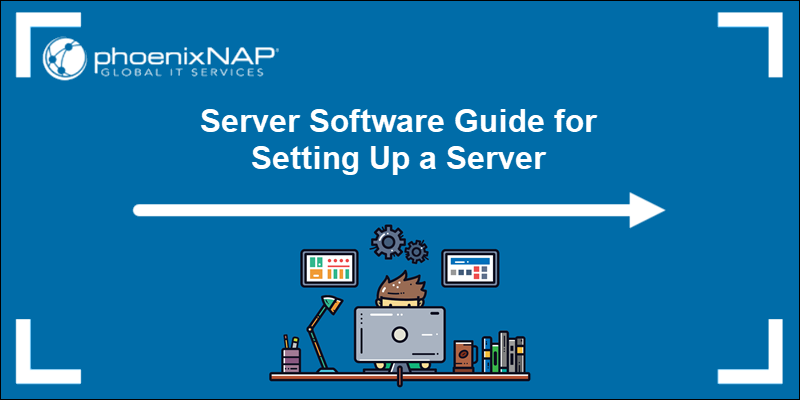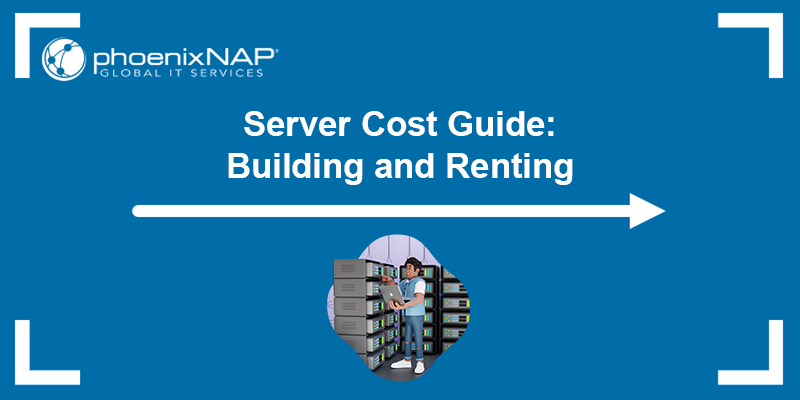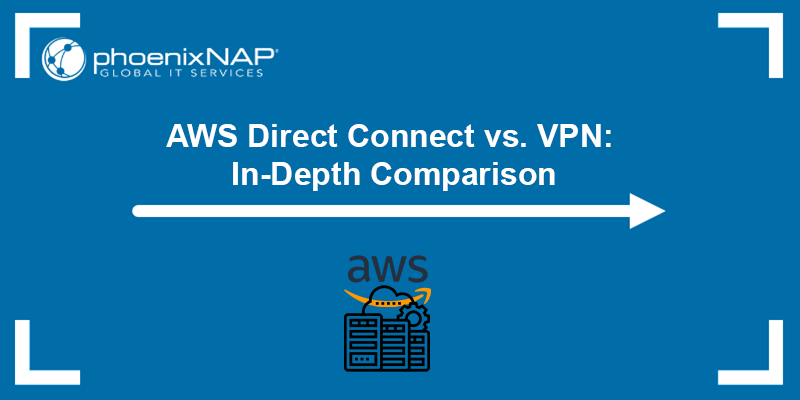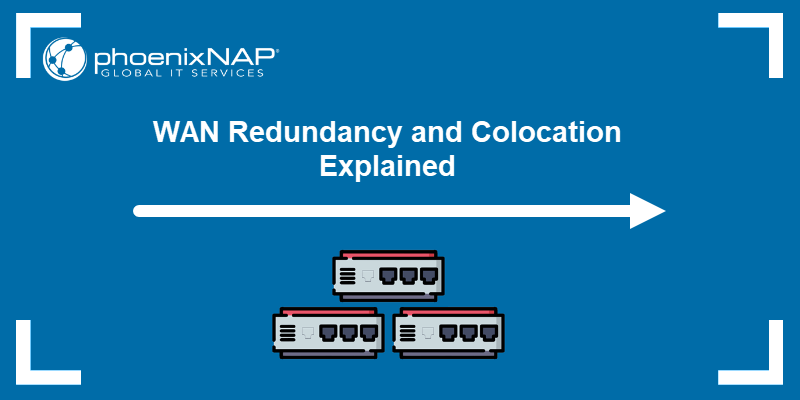Storage Area Networks (SAN) and Network-Attached Storage (NAS) are two widely used solutions for managing and accessing large data volumes in modern IT environments. Understanding the differences between the two helps choose the right storage solution based on performance, scalability, and workload requirements.
This article compares SAN and NAS, provides an in-depth analysis of their key differences, and helps you determine which storage solution best fits your organization's needs.
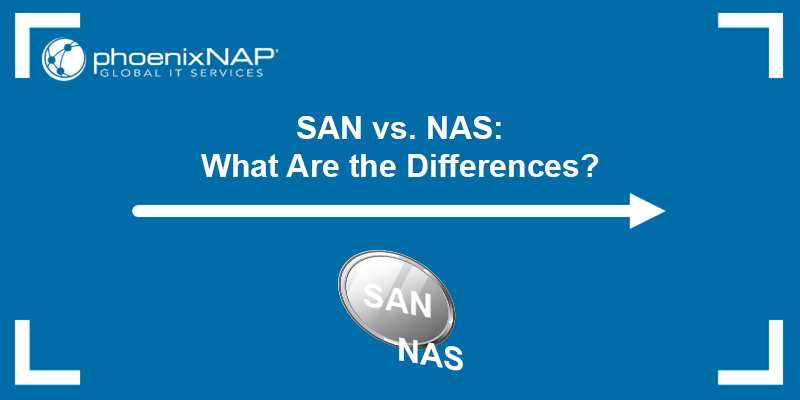
SAN vs. NAS: Overview
A Storage Area Network (SAN) and Network-Attached Storage (NAS) are centralized storage solutions that differ in architecture, performance, and use cases. NAS connects directly to a standard network and shares files over common protocols like NFS or SMB. On the other hand, SAN provides block-level storage over a dedicated high-speed network, typically using Fibre Channel or iSCSI.
The table below summarizes the key differences between SAN and NAS:
| Feature | SAN | NAS |
|---|---|---|
| Storage type | Block-level storage. | File-level storage. |
| Network | Logically or physically isolated storage fabric (FC or Ethernet with VLAN/QoS). | Standard IP network (dedicated or shared). |
| Protocols | Fibre Channel, iSCSI, FCoE, FC-NVMe, NVMe/TCP, NVMe/RoCE. | SMB 3.x, NFSv4.1/4.2 (pNFS). |
| Performance | Consistently low latency, high IOPS/throughput for block workloads. | From good (single-head) to excellent (RDMA, scale-out). Latency depends on design. |
| Scalability | Highly scalable, suitable for large environments. | Easier to scale but limited by network speed. |
| Ideal use case | Databases, virtualization, high-performance apps. | File sharing, backups, collaboration. |
| Cost | Higher initial investment. | More affordable and easier to set up. |
Key Components of SAN and NAS
While SAN and NAS share the same goal, centralized data storage, their underlying components differ significantly. SAN relies on specialized hardware and networking infrastructure, while NAS integrates storage and file-serving capabilities into a single device.
SAN components:
- Host Bus Adapters (HBAs). HBAs connect servers to the SAN for high-speed block-level access.
- Switches and directors. They facilitate communication between servers and storage devices over dedicated Fibre Channel or iSCSI networks.
- Storage arrays. Storage arrays provide block-level storage capacity, often with advanced caching and tiering capabilities.
- SAN management software. The management software handles configuration, zoning, performance monitoring, and replication.
NAS components:
- NAS head / controller. The main unit responsible for file sharing and managing connected storage drives.
- Network Interface Cards (NICs). The NICs provide connectivity to the existing TCP/IP network.
- Operating system and protocols. Responsible for managing file-level storage, supports protocols such as CIFS, SMB 3.x, and NFSv4.1/4.2 (pNFS).
- RAID and backup features. Many NAS systems include built-in RAID configurations and automated backup tools for data redundancy.
SAN vs. NAS: In-Depth Comparison
This section explores the key differences between SAN and NAS in greater detail to help you understand how each solution works and when to use it.
Architecture
NAS connects directly to an existing TCP/IP network and operates as a standalone storage device. Users access files through standard file-sharing protocols, making NAS easy to deploy and manage.
SAN, in contrast, typically uses a logically or physically isolated storage fabric. It provides block-level access, allowing servers to treat storage as if it were locally attached. This architecture improves performance and reduces network congestion. The diagram below compares the SAN and NAS architecture:
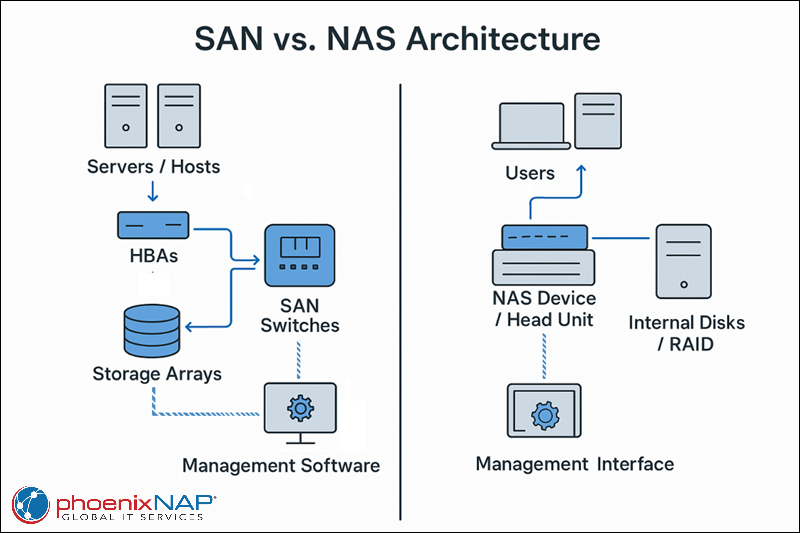
Performance
SAN solutions are optimized for high-speed, low-latency data transfers. Through dedicated infrastructure and protocols like Fibre Channel, SAN minimizes bottlenecks and it is ideal for demanding workloads such as databases, virtualization, and enterprise applications.
NAS performance depends on the existing network bandwidth since it uses standard TCP/IP connections. While modern NAS devices can handle large workloads, they are generally better suited for less latency-sensitive tasks like backups and file sharing.
SAN generally offers predictable low latency for block workloads, while NAS performance varies by design.
Note: VMware supports both SAN (VMFS over FC/iSCSI/NVMe-oF) and NAS (NFS datastores).
Scalability
SAN systems are highly scalable and can support hundreds or thousands of terabytes of storage across multiple servers. Expanding a SAN typically involves adding more storage arrays or increasing network capacity without disrupting existing services.
NAS devices are easier to scale but have inherent limitations due to network bandwidth and protocol overhead. While many modern NAS solutions support expansion, they cannot match the scalability of enterprise-grade SAN environments.
Protocols
SAN primarily relies on Fibre Channel (FC), iSCSI, or Fibre Channel over Ethernet (FCoE) to deliver fast and reliable block-level access. These protocols are designed for performance and stability in enterprise setups.
NAS uses file-sharing protocols such as NFS for Linux/Unix environments and SMB/CIFS for Windows systems. These protocols make NAS more flexible for cross-platform file sharing but introduce additional overhead compared to SAN.
Cost and Complexity
SAN deployments typically require specialized hardware, dedicated networking components, and expert configuration, which makes them more expensive upfront and complex to manage. However, the investment pays off in performance and scalability for enterprise-level workloads.
NAS is more cost-effective and easier to set up. It requires only a NAS device and a standard network connection. It is an attractive option for small to mid-sized businesses looking for simple, reliable storage without significant infrastructure changes.
Enterprise Features
SAN environments are designed for high availability, data protection, and business continuity. Many enterprise-grade SAN solutions support synchronous and asynchronous replication, allowing data to be mirrored locally or across geographically distributed sites. This capability ensures minimal downtime and protects critical workloads in case of hardware failures or disasters.
For management, SANs typically use in-band and out-of-band interfaces combined with protocols such as SNMP or vendor REST APIs and standards such as SNIA Swordfish. NAS devices, on the other hand, usually offer user-friendly web-based GUIs and intuitive management tools, making them easier to configure and maintain without extensive technical expertise.
Security and Identity Management
Security and access control play a critical role in both SAN and NAS environments. While both solutions offer robust mechanisms to protect data and manage user access, they differ in implementation due to their underlying architectures.
SAN security features are:
- Zoning. Fibre Channel SANs use zoning to control which initiators (hosts) can access specific targets (storage devices).
- LUN masking. Restricts visibility of logical unit numbers (LUNs) to specific servers, preventing unauthorized hosts from accessing storage volumes.
- Authentication. iSCSI SANs often rely on Challenge Handshake Authentication Protocol (CHAP) to validate initiators before granting access.
- Encryption. Modern SANs support encryption at rest and in transit, ensuring data confidentiality across the storage fabric.
- Multipathing control. Provides secure, redundant access to storage while minimizing the risk of unauthorized path usage.
NAS security features include:
- User authentication. NAS systems typically integrate with directory services like Active Directory (AD) or LDAP for centralized user and group authentication.
- Access Control Lists (ACLs). SMB and NFS exports support detailed file and folder-level permissions, allowing fine-grained control over data access.
- Protocol-level encryption. SMB 3.x and NFSv4.2 include native encryption options for securing data in transit.
- Kerberos integration. Commonly used in enterprise NAS environments for secure authentication within Active Directory domains.
- Audit and logging. Many NAS platforms provide detailed access logs and audit trails for compliance and security monitoring.
These mechanisms allow SAN and NAS deployments to enforce strong access policies, protect sensitive information, and integrate with existing enterprise identity solutions.
Choosing Between SAN and NAS
Choosing between SAN and NAS depends on your organization's workload requirements, budget, and scalability needs.
Use SAN if:
- You need high-performance storage for virtualization, enterprise databases, or analytics.
- Your environment demands low latency and high throughput.
- You plan to scale storage significantly in the future.
Use NAS if:
- You need a cost-effective storage solution for general-purpose file sharing.
- Collaboration and cross-platform access are important.
- Your workloads involve backups, archives, or streaming rather than latency-sensitive applications.
Conclusion
This article explained the key differences between SAN and NAS, compared their architectures, and highlighted the factors to consider when choosing the right storage solution. By understanding their performance, scalability, and management capabilities, you can make an informed decision that aligns with your organization's storage needs.
Next, see how to set up NFS on Ubuntu or read our article on RAID levels.
